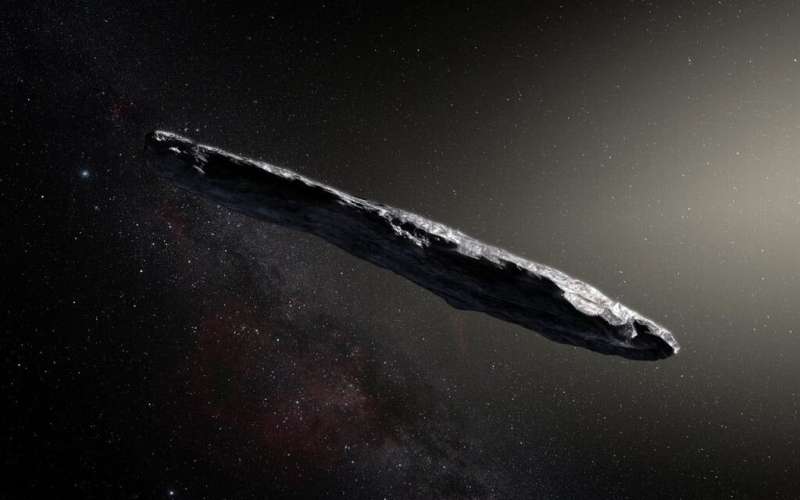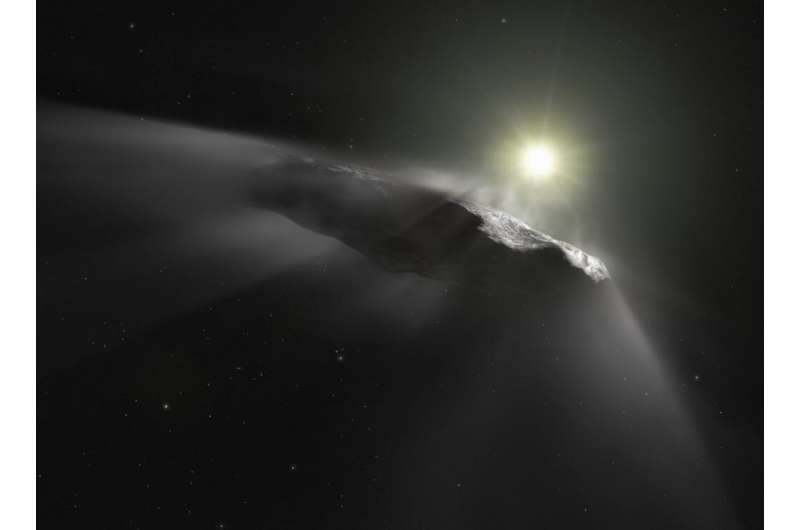By continuously watching the moon, we could detect interstellar meteorites

When "Oumuamua crossed Earth's orbit on October 19th, 2017, it became the first interstellar object ever to be observed by humans. These and subsequent observations, rather than dispelling the mystery of "Oumuamua's true nature, only deepened it. The debate raged about whether it was an asteroid or a comet, with some even suggesting it could be an extraterrestrial solar sail.
In the end, all that could be said definitively was that "Oumuamua was an interstellar object, which astronomers had never before observed. In their most recent study on the subject, Harvard astronomers Amir Siraj and Abraham Loeb argue that such objects may have impacted on the lunar surface over the course of billions of years, which could provide an opportunity to study these objects more closely.
This study, titled "A Real-Time Search for Interstellar Impacts on the Moon," builds on previous research by Siraj and Loeb. In a previous study, they indicated how hundreds of interstellar objects could be in our solar system right now and available for study. This came shortly after Loeb and Harvard postdoc Manasavi Lingham concluded that thousands of "Oumuamua-like objects have entered our solar system over time.
It was also followed by a study by Loeb and Harvard research fellow John Forbes in which they calculated that similar objects crash into the sun once about every 30 years or so. Then there was the study conducted by Siraj and Loeb on the meteor CNEOS 2014-01-08, a smaller object that they concluded was of interstellar origin.
For the sake of this latest study, Siraj and Loeb used the calibration rate for interstellar objects (which they derived from their previous work) to determine how often such objects impact on the lunar surface. The fact that remnants of these objects are on the nearest celestial body to Earth means that studying them would be that much easier. As Siraj told Universe Today via email:
"Up until now, astronomy has been conducted by studying signals from distant locales, with untold quantities of knowledge remaining elusive due to the prohibitive distances we would have to travel to obtain and study foreign physical samples. Interstellar objects are messengers that provide us with an entirely new way of understanding the cosmos. For instance, fragments ejected by stars in the Milky Way's halo could tell us about what the earliest planets were like. And asteroids ejected from the habitable zones of neighboring stars could reveal prospects for life in other planetary systems."
However, studying these objects as they impact the surface of the moon would still be challenging work. Real-time monitoring over a long period of time would be required to observe an impact. For this reason, Siraj and Loeb recommend building a space telescope and placing it lunar orbit to observe the impacts as they take place.
This would all researchers to see impacts and the resulting craters clearly, since the moon has no atmosphere to speak of. Instead of looking to space, this telescope would be pointed toward the lunar surface and be able to see impacts as they happened.
"It would search for the reflected sunlight and shadow of meteoroids as they streak across the lunar surface, as well as the ensuing explosion and the crater that forms afterward," said Siraj. "Taken together, these basic measurements would allow us to constrain the three-dimensional velocity, mass and density of the meteoroid, as well as the radiative efficiency of the impact."
In addition, Siraj explained, follow-up studies of the spectra produced by the explosive impacts could reveal what the meteoroids are composed of. This would tell scientists a great deal about conditions in the system the objects originated from, such as the abundance of certain elements—and perhaps whether or not they would be a likely place for habitable planets to form.

Knowing whether or not a meteoroid came from a distant solar system (or was kicked out of the main asteroid belt or elsewhere) would be possible by calculating the object's three-dimensional velocity. This could be derived by observing how quickly the object moves relative to its shadow before the moment of impact.
The benefits of this kind of research would be far-reaching. Beyond learning more about other star systems without actually sending robotic missions there (a very time-consuming and expensive enterprise), this research could help us prepare for any eventual impacts here on Earth.
"Such a mission would add to our understanding of where interstellar objects come from and what they are made of. The more we know about interstellar objects, the more we can understand about how similar or different other planetary systems are to our own. In addition, such a mission could be of interest to the Department of Defense, as it would effectively serve as a laboratory for understanding hypervelocity impacts."
And, just putting this out there, if there is even the slightest possibility that one or more of these interstellar objects is an extra-terrestrial spacecraft, examining the resulting debris and spectra would allow researchers to determine that with confidence. Perhaps, if some of the debris is recoverable, we could even send the next generation of lunar astronauts there to inspect it—alien tech, people!
More information: Amir Siraj, Abraham Loeb. A Real-Time Search for Interstellar Impacts on the Moon, arXiv:1908.08543v1 [astro-ph.EP]: arxiv.org/abs/1908.08543.
Provided by Universe Today




















